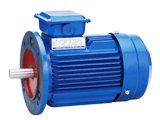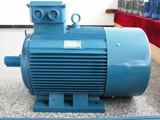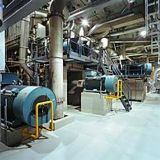Scope and test standards for induction motors
 All asynchronous motors that are put into service must be subjected to acceptance tests in accordance with PUE, in the following volume.
All asynchronous motors that are put into service must be subjected to acceptance tests in accordance with PUE, in the following volume.
1. Determination of the possibility of switching on asynchronous electric motors with a voltage of more than 1000 V without drying.
2. Measurement of the insulation resistance of electric motors:
a) stator winding of an asynchronous electric motor with a voltage of up to 1000 V megohmmeter for voltage 1000 V (R60 should be at least 0.5 megohm at 10 — 30 ° C),
b) the rotor windings of asynchronous electric motors with a phase rotor with a megohmmeter for a voltage of 500 V (insulation resistance must be at least 0.2 MΩ),
c) thermal sensors with a megohmmeter for a voltage of 250 V (insulation resistance is not standardized),
4. Measurement of direct current resistance:
a) stator and rotor windings of asynchronous electric motors with a power of 300 kW or more (the difference between the measured resistances of the windings of different phases or between the measured and factory data is allowed no more than 2%),
b) for rheostats and starting adjustment resistors, the total resistance is measured and the integrity of the taps is checked. The difference between the measured resistance and the passport data is allowed no more than 10%.
See here: Measurement of insulation resistance of electric motor windings to direct current
5. Measurement of gaps between steel and rotor. The difference between the air gaps at diametrically opposite points or points offset from the rotor axis by 90 ° and the average air gap is allowed no more than 10%.
6. Measurement of clearance in sliding bearings.
7. Measurement of the vibrations of the bearings of the electric motor.
See here: How to eliminate engine vibration
 8. Measurement of the rotor runout in the axial direction for electric motors with ball bearings (the allowable value of the runout of 2-4 mm is permissible).
8. Measurement of the rotor runout in the axial direction for electric motors with ball bearings (the allowable value of the runout of 2-4 mm is permissible).
9. Testing the air cooler with a hydraulic pressure of 0.2 — 0.25 MPa (2 — 2.5 kgf / cm2). The duration of the test is 10 minutes.
10. Checking the operation of the asynchronous electric motor at idle speed or with an unloaded mechanism. The no-load current value of the electric motor is not standardized. The duration of the inspection is at least 1 hour.
11. Checking the operation of the asynchronous electric motor under load. It is produced with the power consumed by the electric motor from the network provided by the technological equipment at the time of commissioning.In this case, regulation limits for variable speed electric motors are defined.
When setting up electric motors, it is often necessary for additional tests and measurements.
Read more about it here: Regulation of asynchronous motors

